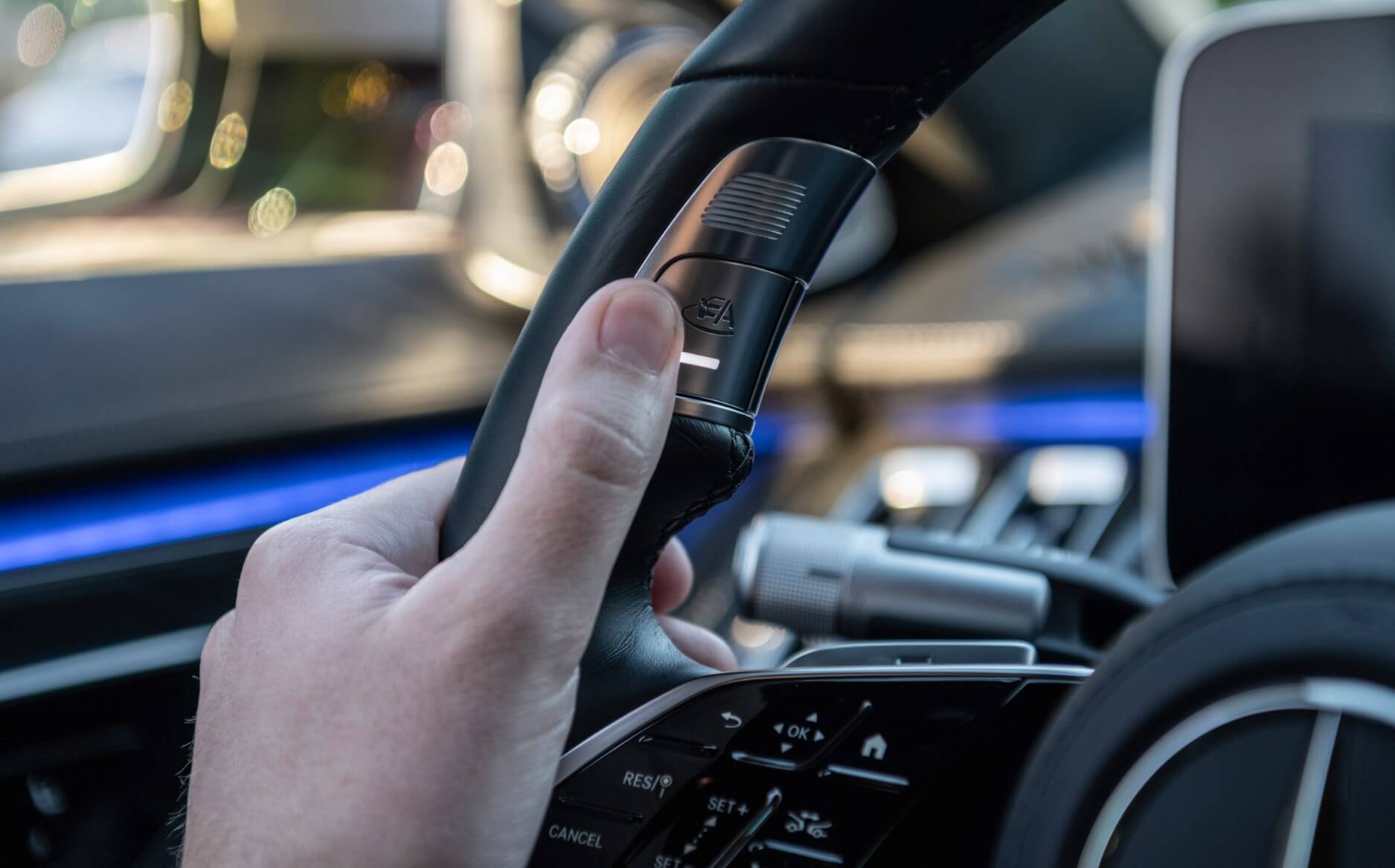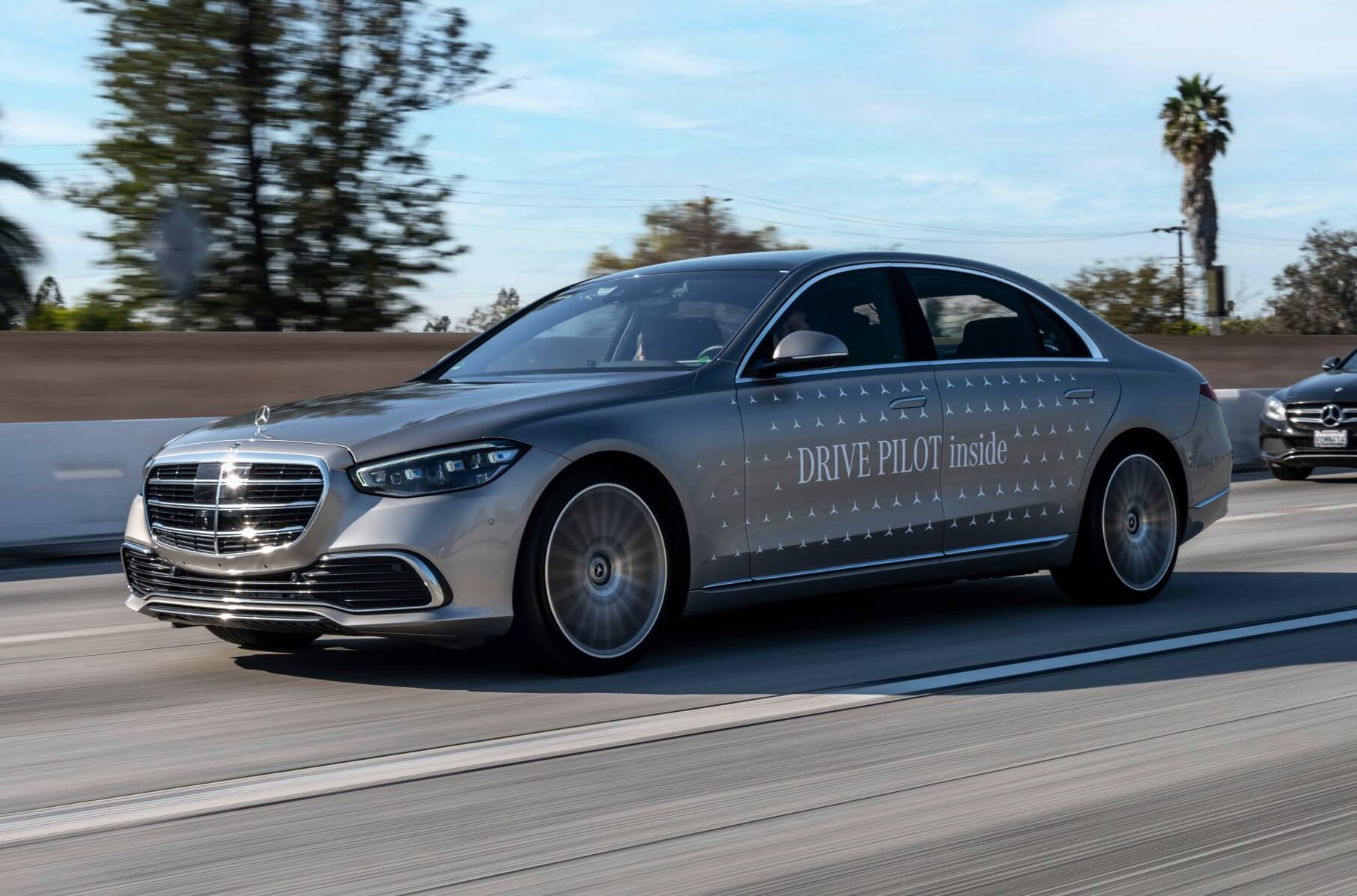Mercedes-Benz becomes the first car maker to have level-three autonomous driving software approved in the US.
The US state of Nevada has approved Mercedes-Benz’s level-three automated driving system for use on public roads under certain driving conditions.
Named Drive Pilot, it will be equipped in Mercedes-Benz S-Class and Mercedes-Benz EQS cars produced for the US market from the 2024 model year, with the first examples featuring the technology slated for delivery in the second half of 2023.
Mercedes-Benz heralded the decision as “the dawn of a new era”.
The system is capable of taking control over driving at speeds of up to 40mph, guiding the vehicle in its lane, controlling vehicle speed and actively reacting to the distance of the vehicle in front. It can also acknowledge traffic and road signs and perform evasive manoeuvres independently.
As the system complies with Nevada Chapter 482A for Autonomous Vehicles, Mercedes has become the first car maker to have a level-three system officially approved for use in the US.
“In the modern world, time is one of the most precious commodities, and giving back time to our customers is a core element in our strategy to build the world’s most desirable cars,” said Markus Schäfer, Mercedes’ technology boss.
“Our Drive Pilot takes a major step forward in achieving that and places us at the very forefront of innovation in the crucially important field of automated driving.”
Mercedes said it will allow drivers to take their hands off the wheel and perform “ancillary tasks” on the car’s infotainment display, such as sorting emails and online shopping.
The system uses lidar sensors, cameras, microphones and a wetness sensor while road geometry and traffic events are constantly read from a 3D digital map.
The technology automatically reads road signs and responds to unexpected incidents independently, performing evasive and braking manoeuvres. It can also detect the blue lights of emergency vehicles.
It will perform an emergency procedure if the driver doesn’t take back control following urgent prompting or after an expiration timer is sounded, bringing the car to a standstill, switching on the hazard warning lights and unlocking the doors.
The technology was approved by Germany’s Federal Motor Transport Authority (KBA) in October 2021 for use on the country’s 13,190km of autobahn, before it was formally introduced in May 2022.
At the time, it meant Mercedes cars were the first in the world to be equipped with an “internationally valid” conditionally automated driving system.
Schäfer said then: “With this lidar-based system, we’ve developed an innovative technology for our vehicles that offers customers a unique, luxurious driving experience and gives them what matters most: time.
“We’re once again proving our pioneering work in automated driving and also initiating a radical paradigm shift. For the first time in 136 years of automotive history, the vehicle takes over the dynamic driving task under certain conditions.”






